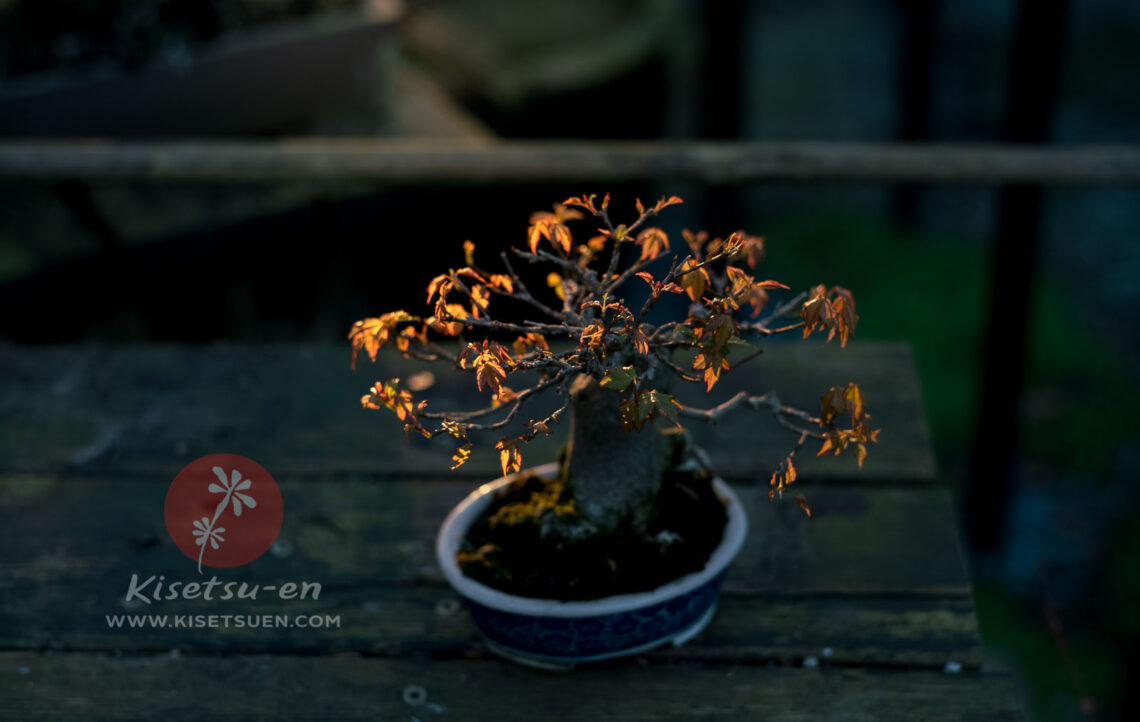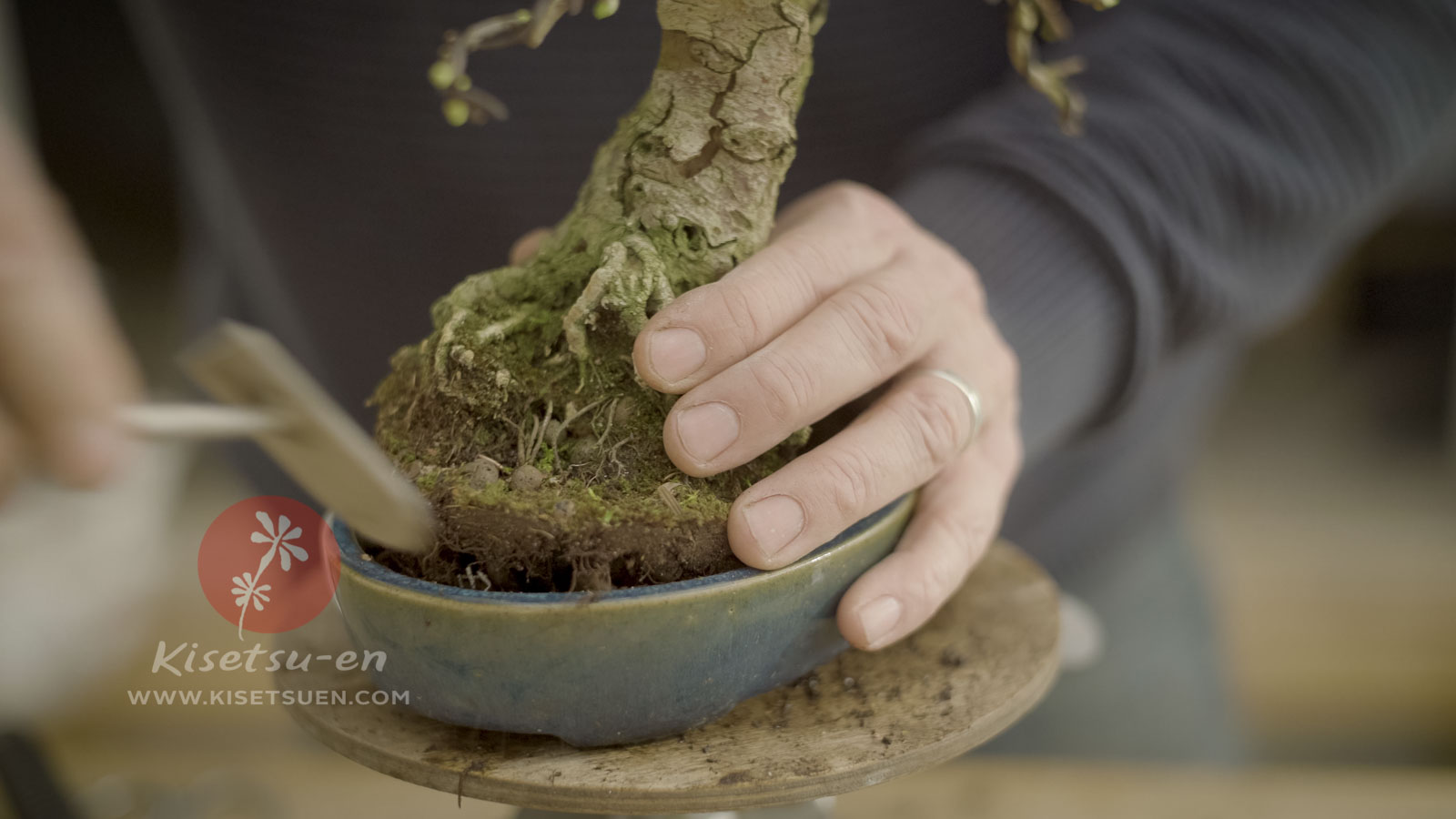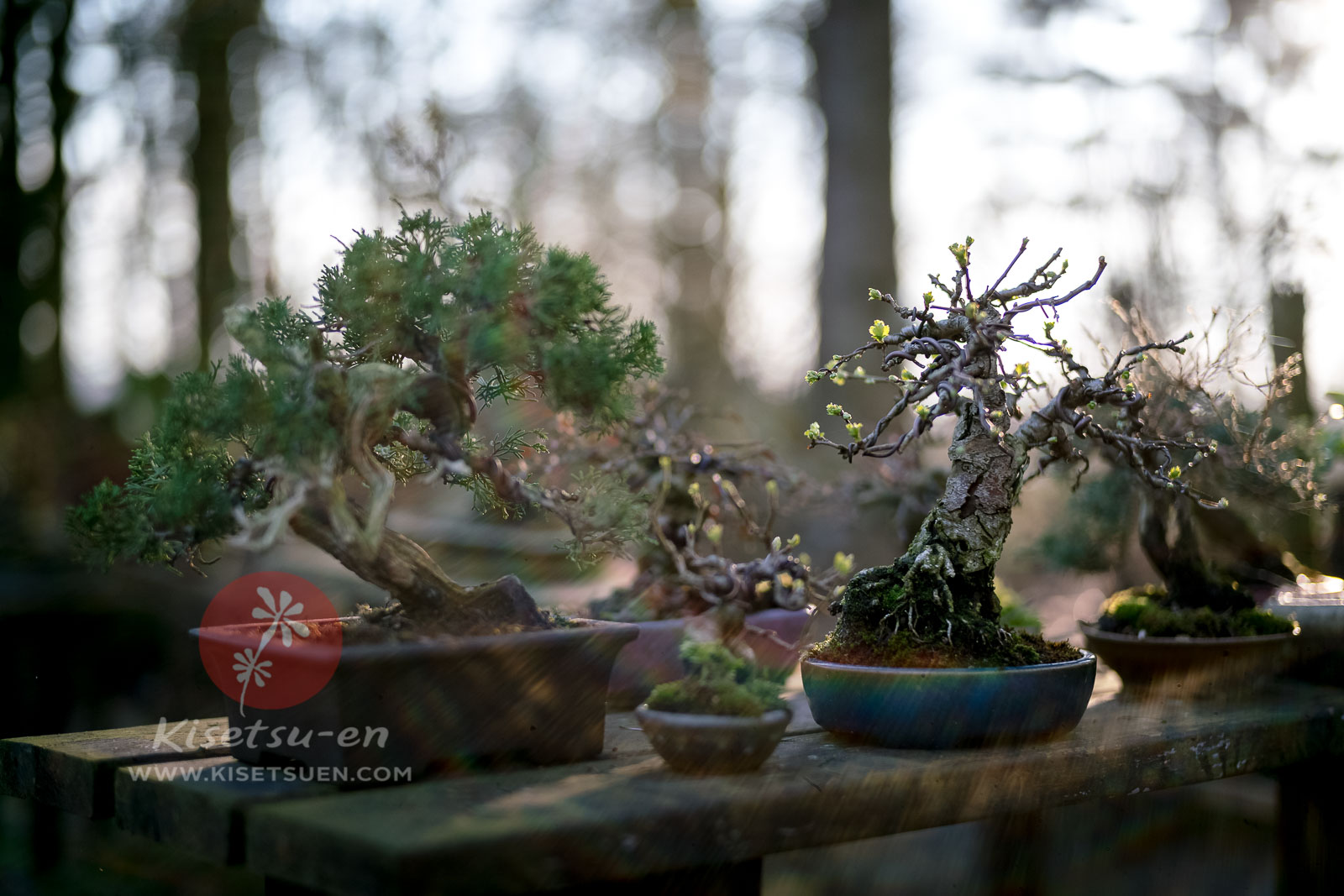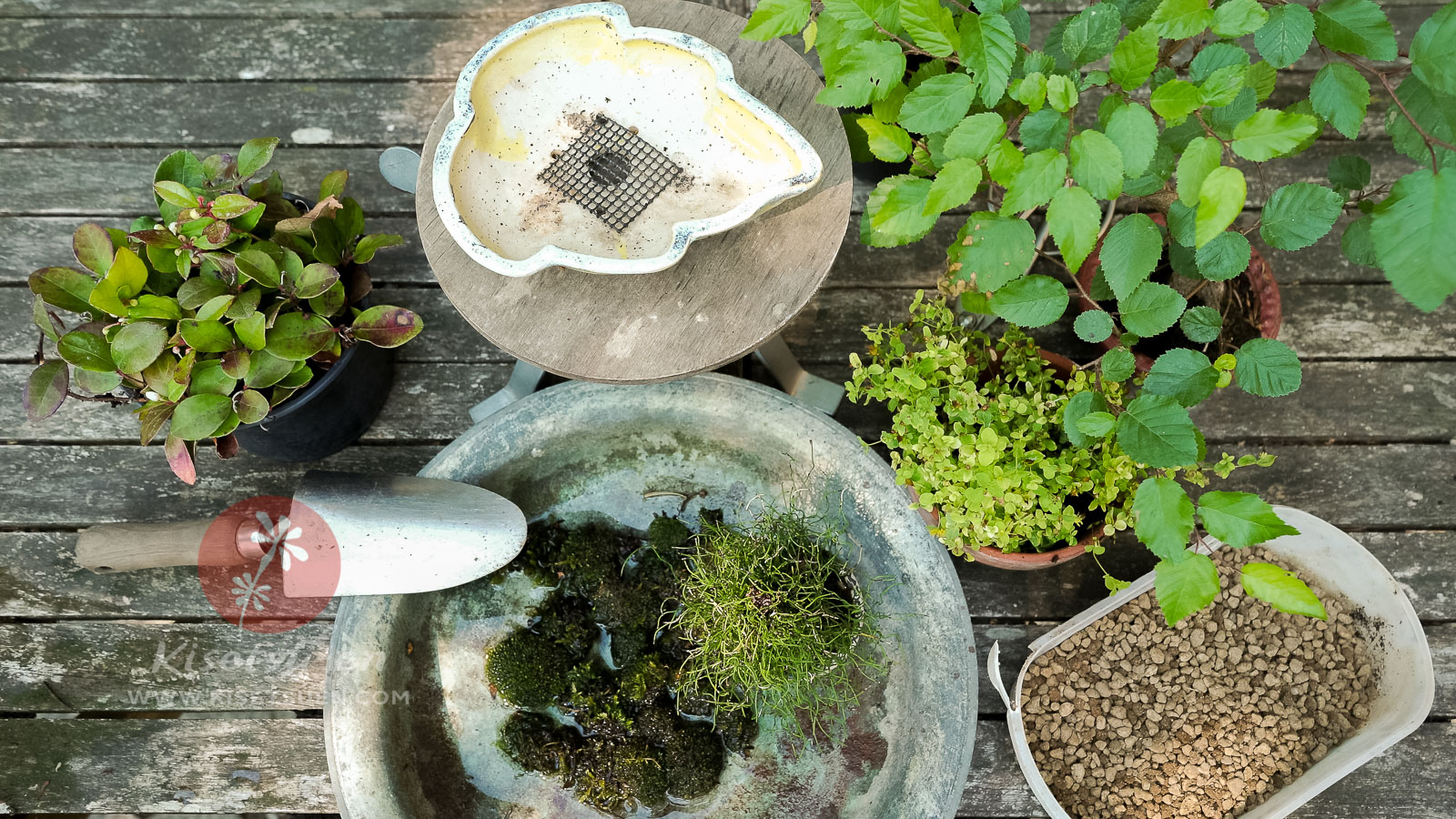
Why you should wait before you repot your bonsai
A lot of people are eager to repot their bonsai now. But it is far too early. In this blog post, I will tell you why you should wait and not let a fairly mild winter lead you into trouble.

Patience. Hold on. Wait.
There are a number of very good reasons why you should not repot now. It might be tempting. Leafs may begin to open, buds swell and it is nice outside.
An increase in soil temperature improves root growth and that is important to have in mind. So it isn’t enough that we have a few sunny days and temperatures are fine for a shorter period.
Higher steady soil temperatures increase the metabolic activity of root cells and the development of lateral roots. Low soil temperature results in reduced tissue nutrient concentrations and as such decreases root growth. If the root growth is activated and then set back by dropping spring temperatures this changes the growth of the roots.
Not a very big issue if the roots are healthy and undisturbed. But it will be a major setback if a tree has been root pruned or just disturbed by the repotting regime. The roots need a higher temperature to recover after being transplanted and hurt by cutting. They need that to heal up and grow healthy.
Roots need a steady temperature and are not as forgiving regarding temperature shifts as branches buds and leaves.
An early repotting is risky because spring temperatures easily change around here at least.
Also, remember that all the sugars and energy stored in the roots for the winter dormancy needs time to be transported to the very tips of the branches and to the leaves. If roots are stressed and pruned this action will be set back and ruined to some point. Therefore it is better to wait for the spring growth to be clear on its way,
A good hint for the right time to repot deciduous and broad-leaved evergreens bonsai is when the Forsythia blooms. Coniferous trees a month later, and Pines in the semi-dormant period (July). Adapt this to your local area. There are of course differences between southern Italy and Denmark in Northern Europe.

Greenhouse mismatches
If you overwinter bonsai in a greenhouse it might lead you to think spring arrives earlier because the inside temperature rice early. The increase in temperature in a greenhouse may start the growth of leaves, but it will challenge you later.
Keeping a bonsai in the greenhouse (or alike) is not a solution to early repotting.
First of all the light in a greenhouse is reduced by around 10 -15 % if you look at a clean new piece of glass. A little dirt reduces it more, and waterdrops let up to 8% less light in on top of that. This means that new growth extending in a greenhouse will stretch to reach more light and it will be weaker.
If the glass is replaced with other materials the light intensity will drop even more dramatically. The important spring growth is where the leaves take up the light and transform it into energy and growth. Therefore the setback is more severe at this time where Photosynthesis (the process by which plants use sunlight, water, and carbon dioxide to create oxygen and energy in the form of sugars) starts the season and build up the strength of the tree.
Lack of light when keeping a bonsai in the greenhouse for too long therefore is a major drawback.
When the tree later is moved outside it has to adapt to the strong sunlight, and a shift in temperature and set back in growth. Therefore it is not a good option to repot early and keep the tree in a greenhouse longer. It is better to harden the new growth up from the very start, instead of setting weak growth back. The first flush of growth in spring is the strongest and should be the best possible.
If you overwinter your trees in a greenhouse or similar, be sure to keep it cold by opening doors and windows so trees are not forced to grow too early.
Root growth and temperatures
Roots have some optimal temperatures where they develop the strongest growth. You can read more about it here.
Cut down more simple. It is just important to know that unstable and shifting temperature (even when reaching as high as 16 degrees Celcius) during late winter and early spring reduces the root growth by about 40% compared with a steady temperature around the same 16 C. later in the season. So unstable temperatures is a “killer” for healthy root growth. A steady temperature is a gift.
When temperatures are higher the shift between temperatures and the impact on root growth are of less importance or equally to none. Only when overheated in the strong summer sun, it will have health risks for the roots.
Be patient. Take care.
Bottom line. Be patient. Do not repot too early. I start the repotting during March and April here depending on the weather and the growing signs of bonsai placed outside.






8 Comments
Blake Lewis
Excellent advice
albek
Thanks Blake. 🙂
Peggy Howard
In Summer we only have a slow 1-2 degree change up to 95+F. But Winter is crazy. We have had a 20 degree drop at least 5 times down into 30’s this year, Ex. 55 to 34 for 4 hours, in 8 hours back up to 68*. And at least had a 30+ degree drop twice. Wish I had a greenhouse. Thanks for the advice, always wondered what that was doing to the trees. After 7 times get lazy what bring in, and weathercasters wrong so often.
Peggy, outside New Orleans
albek
Ohhh those weathercasters are not reliable 🙂 A difficult job I assume. Those temperatures going up and down is not good for anything. This season we mostly had rain. I am not sure what I prefer any longer. 🙂
Ian Butland
Great advice Morten, thank you.
albek
Thanks Ian (Y) A lot of responses on this one 🙂
Jeff Banning
Good advice generally Morten but I have a specific situation which has flummoxed me somewhat. I need to add an additional larch to an already existing group. The optimal time to repot larch is just when the buds are starting to get shiny and show initial signs of greening. The additional tree that I want to add is ready according to these criteria but the trees in the group show no signs of spring budding yet.
I keep the tree in a workshop with windows on two sides so the trees will receive a modicum of light but not a lot.
So, what to do ? I am considering use of a heat mat to maintain a steady temperature for the roots. Any other thoughts?
albek
Hi Jeff
I fully understand the character and considerations in your question.
In this case you have to go for what is most important and what is most at risk. The timing for the larch is very important. If you can avoid disturbing the other trees around too much and just adding space for the tree added, I believe that will work fine.
Larches are delicate regarding repotting so just be careful and avoid rearranging all trees if possible. Is that possible, so you just make room for the tree without lifting, cutting roots and refitting the full group? In that case I am sure you will succeed. The almost undisturbed trees will continue as usual and the new boy in class will be fine because it is ready.
A heat mat will not necessarily make a huge difference ín this case, because the delicate situation is relying on the timing and the tree developing with an odd timing compared to the main group.
Will be interesting to see if this continues afterward due to genetic differences, or if it is just because they had different physiological situations making this tree have a sooner start.
In some forest plantings (and in nature) the genetic codes will make some trees develop before others, and go dormant before or after the majority of trees in the group.
I hope you will succeed adding it to the group.
Best regards
Morten